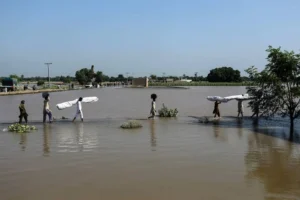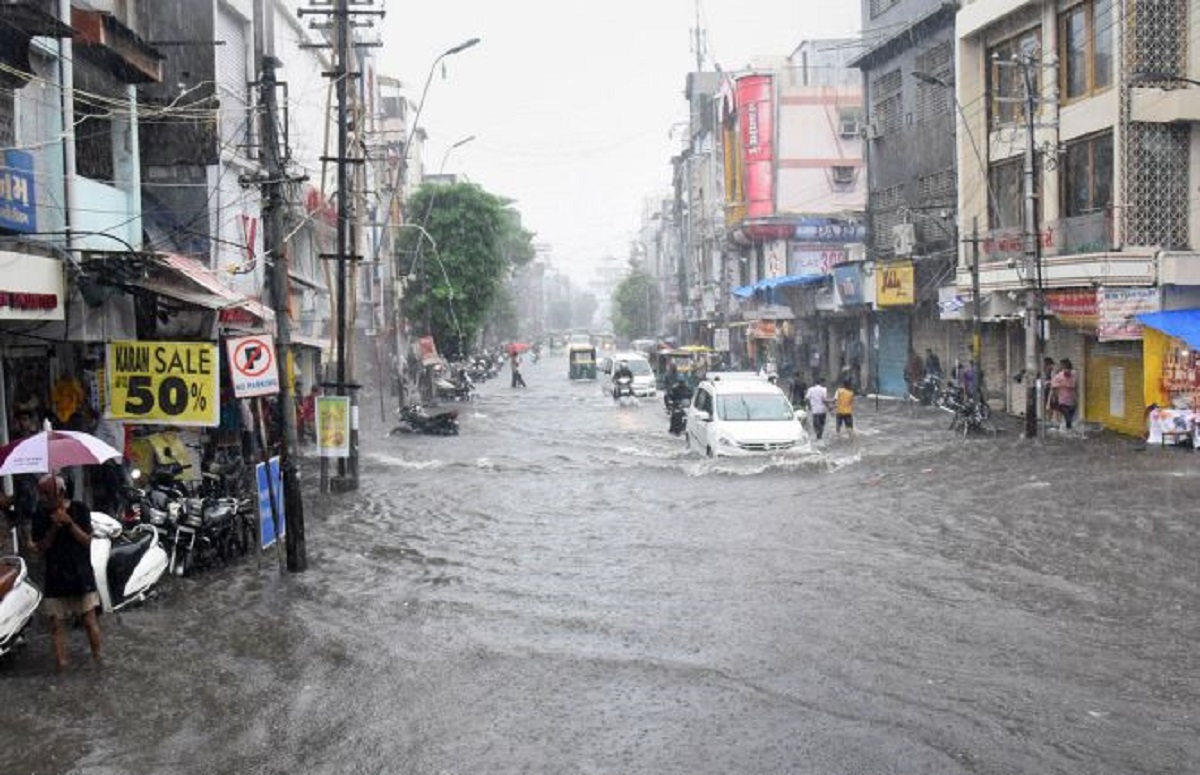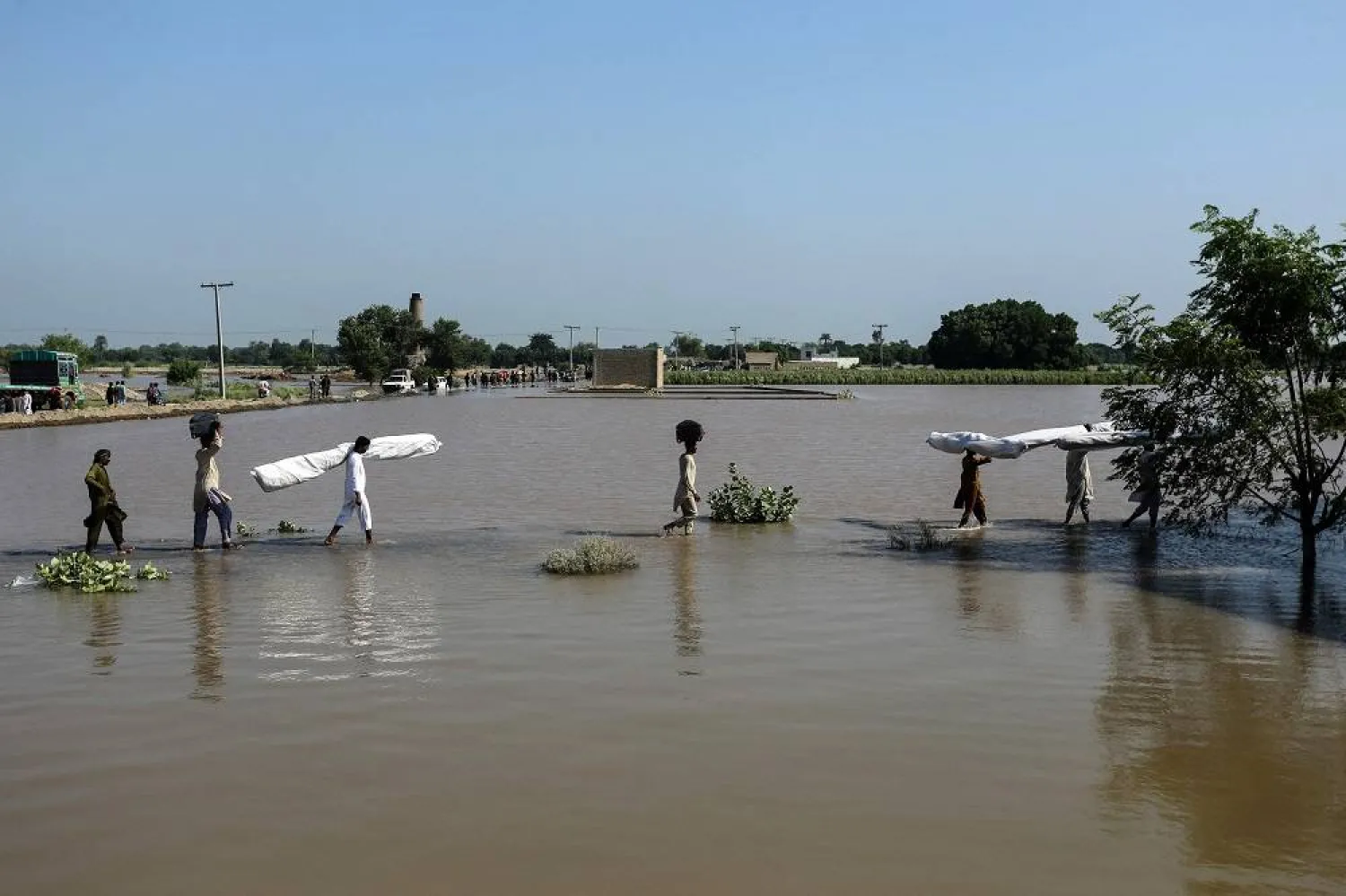The city of Gujrat witnessed an unprecedented weather event this week as torrential downpours shattered past statistics. Authorities confirmed that the Gujrat rainfall record reached a staggering 506 millimeters within just 20 hours, causing widespread urban flooding across Punjab. Homes, businesses, and transportation networks were submerged under water, leaving residents grappling with one of the worst rain-induced disasters in recent memory.
A Deluge Unlike Any Other
Meteorologists revealed that this was no ordinary downpour. The scale of devastation arose from an intensity rarely seen in Pakistan’s climate history. According to official reports, the Gujrat rainfall record far exceeded previous measurements in the region, making it the heaviest single day rainfall in decades.
Rain gauges across the city overflowed as water levels surged in low lying areas, overwhelming drainage systems. Within hours, streets resembled rivers, while cars and motorbikes floated in unexpected currents. Satellite data suggested that the storm carried unusual monsoon intensity, compounded by shifting regional climate patterns.
Human Impact and Safety Concerns
With water flooding into homes, schools, and hospitals, residents experienced serious disruptions. Families were forced to seek shelter with relatives or in emergency relief centers established by local authorities. Electricity outages worsened the situation, as power lines fell and substations were damaged by rising waters.
Local police issued alerts urging people to remain indoors, while ambulance services struggled to navigate submerged streets. Emergency departments treated numerous cases of waterborne illnesses, injuries from accidents, and cases of hypothermia caused by prolonged exposure to floodwater. This disaster highlighted how vulnerable cities remain when faced with extreme weather patterns like the Gujrat rainfall record.
Punjab’s Urban Flooding Crisis
While Gujrat bore the brunt of the disaster, its effects rippled across Punjab. Neighboring towns saw flash floods after rivers and nullahs swelled beyond capacity. In Lahore, Rawalpindi, and Faisalabad, drainage lines were stretched thin, resulting in knee-to-waist deep water in marketplaces and residential colonies.
The Punjab Disaster Management Authority (PDMA) confirmed that flood response teams are actively working around-the-clock to evacuate stranded individuals. However, logistical challenges remain immense due to collapsed infrastructure, blocked highways, and disrupted rail services. Citizens across the province were warned not to engage in unnecessary travel, as more rainfall is expected in the coming days.
Climate Scientists Weigh In
Experts from the Pakistan Meteorological Department (PMD) linked the Gujrat rainfall record to shifting monsoon behavior and possible signs of climate intensification. Warmer ocean currents, changing wind patterns, and increased atmospheric moisture have collectively amplified the severity of rain-bearing systems in South Asia.
Dr. Ayesha Malik, a climate researcher, emphasized that these events should serve as a wake-up call. “We are no longer looking at isolated incidents; instead, we see a trend of extreme weather repeating more frequently. Urban centers must prepare to adapt their infrastructure to withstand such shocks,” she explained.
Infrastructure Under Pressure
Flooding in Gujrat has exposed the fragility of drainage networks, poorly managed sewage systems, and unplanned urban expansion. Areas with clogged drains reported higher water accumulation, while newly built housing projects without elevation safeguards were quickly inundated.
Civic agencies admitted they were overwhelmed by the volume of water. Although pre-season cleaning of drains is conducted annually, the Gujrat rainfall record highlighted shortcomings in urban planning and disaster preparedness. Experts are now calling for comprehensive flood management strategies, including large-scale rainwater harvesting and building more robust stormwater channels.
Community Resilience and Volunteerism
Amid despair, stories of resilience emerged. Local mosques opened their doors to provide temporary shelter. Volunteers distributed food, bottled water, and medicines to displaced families. Youth groups and university students mobilized quickly, forming flood relief teams to assist elderly residents and rescue stranded pets.
For many in Gujrat, the record rainfall was not just a statistical event—it was a humanitarian crisis. Yet, the collective spirit of the community demonstrated that even in the face of historic hardship, solidarity can ease suffering. This emotional dimension gave deeper meaning to what the Gujrat rainfall record represents.
Government and Relief Measures
Punjab’s Chief Minister visited Gujrat to oversee relief operations, promising urgent funds for rehabilitation. Military units also supported rescue missions by deploying boats and medical teams. Helicopters dropped essential supplies in areas cut off due to collapsed bridges and damaged highways.
The government also pledged to provide compensation to families who lost loved ones or properties. Relief camps established around city borders are accommodating displaced families, though concerns about overcrowding and sanitation remain. The scale of operations required underlines the severity of events triggered by the Gujrat rainfall record.
Lessons for the Future
Urban planners, environmentalists, and policymakers agree that addressing future challenges requires both immediate reforms and long-term climate adaptation strategies. Investments in early warning systems, modernized drainage infrastructure, and community awareness campaigns can mitigate damages from similar events.
The Gujrat rainfall record will likely be remembered as a turning point—a disaster that exposed vulnerabilities while also reminding citizens of the urgency to treat climate resilience as a national priority. Without structural reforms, such disasters may continue to escalate in both frequency and severity.
Conclusion
The 506 millimeters of rain that fell in just 20 hours have gone down as a climatic milestone and humanitarian challenge. For Pakistan, this disaster is a stark reminder of nature’s growing unpredictability. Yet, amid chaos, the resilience of citizens, the coordination of rescue teams, and the unity shown through community services all point toward recovery.
While scientists debate the global implications of extreme rainfall, one fact remains undeniable: the Gujrat rainfall record is now etched in history, serving both as a warning and a call to action for better preparedness in the years ahead.
















